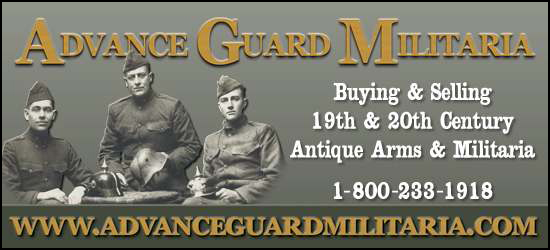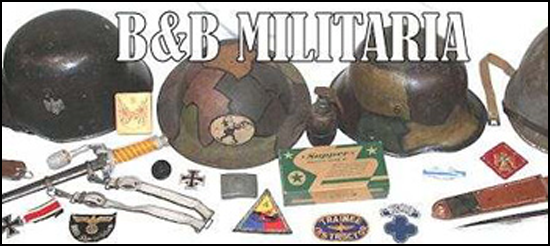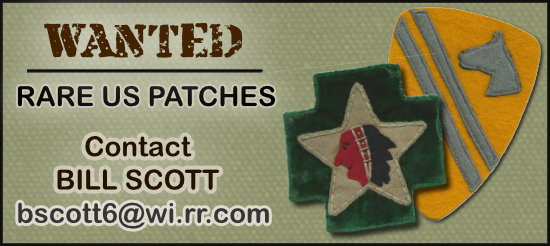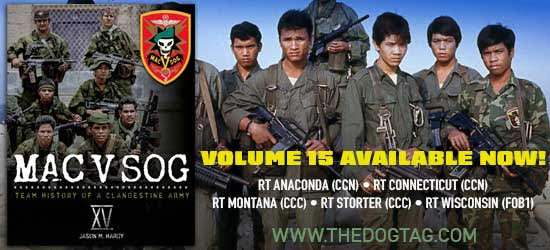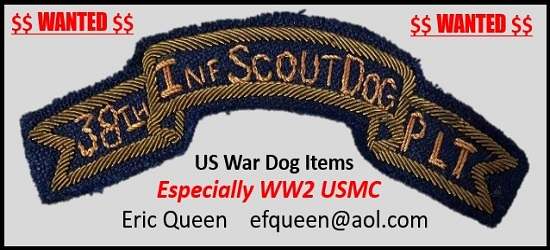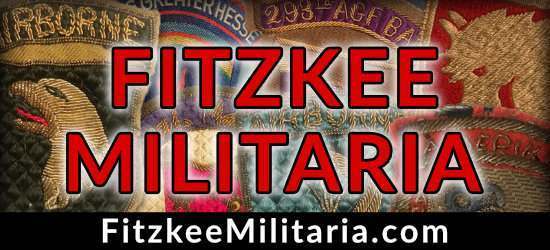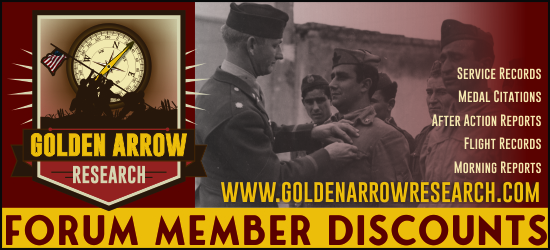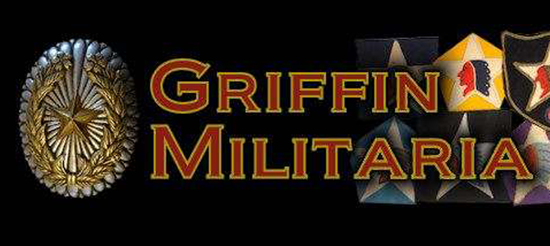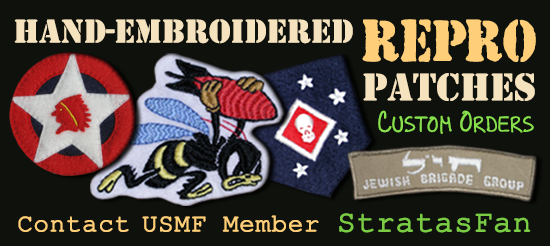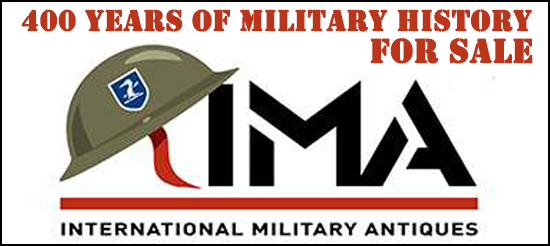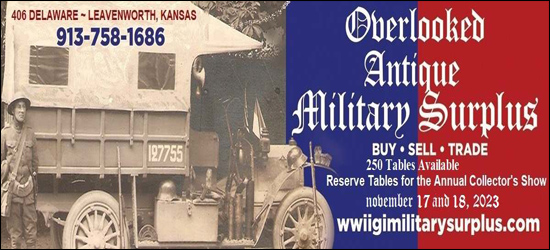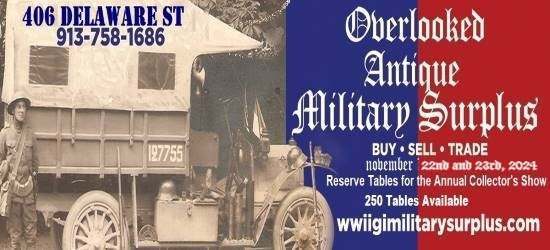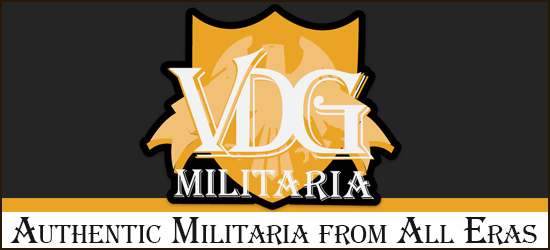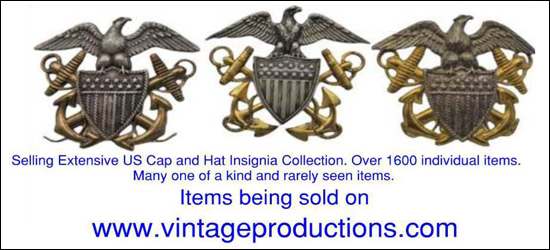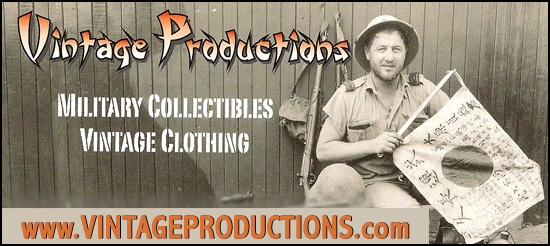-
Donate
Type donation amount in box below.
IMPORTANT! If you donate via PayPal using an e-mail address different than the one you are currently using on USMF and would like a 2024 Donor Icon added to your account, you MUST CONTACT vintageproductions or stratasfan and let them know what email address was used for the donation.
Thank you for supporting USMF.
Donate Sidebar by DevFuse -
Recent Posts
-
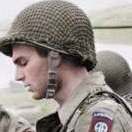
By Gear Fanatic · Posted
Hey all, I have had this uniform for A LONG time and never really been able to identify it till mid last year and even then I wasn’t sure as the name was practically gone, from but with the help of a black light and being able to study the uniform and narrow it down I came upon the Conclusion that this uniform belonged to Raymond Clarence Franklin of Co. “E” 318th Sappers apart of the 6th infantry division in France. He enlisted on March 8th 1918 in Portland Oregon and was sent to Vancouver Barracks an at the to the 318th where they trained for a total of 3 months brute departing to the New Jersey to be shipped overseas with the 6th. They departed from Hoboken NJ on May 8 and arrived at breast in June and soon started working building Barracks and water supply systems behind the lines near Chatteu Thierry and in that general vicinity where they nearly participated as an infantry unit because of lack of troops. After working for a Few months they later transferred to the Vosges sector around late August early September, they remained here manning the line even though it was a rarely quiet sector. Here Co. E and Co. F worked continuously on building better trails and road for artillery and supply purposes. Here they worked under frequent shell fire and suffered a few minor wounds. Towards the end there they were transferred off the line for a bit but later joined the 6th infantry division the Meuse Argonne Offensive for the last week or two. Here they worked more as a frontline Engineer unit working right in the wake of the German retreat and even rebuilding a crucial bridge near the town of Stonne. This helped the allied pursuit of the retreating Germans. While doing this they were attacked multiple times by enemy machine guns and aircraft as well as booby traps that were left behind by retreating Germans. For example when laying low In a German trench a group from Co. E was cooking In a German stove unbeknownst to them there were a handful of grenades up the stove pipe which cooked off and instantly killed two of the sappers and wounded the surrounding group. Soon the armistice was announced and the unit stayed as an occupying force in the Alsace region. Soon in June-July the 318th was sent back to the states including Pvt. Franklin who arrived back and went back to Oregon where he spent the rest of his life living peacefully on the river. He never married or had any family. Pvt. Franklin may not have had the most interesting service or life in general, but I think his story is very simple in the best way possible. He served his country even at the age of 40 when he enlisted having been born in 1879. Hope someone here enjoyed my very basic write up and the uniform which came with a nice little bit of pocket litter including some business cards to a man in the 88th, some German coins he probably picked up in the Alsace region, his footlocker key, And a spoon dated 1916. The spoon and coins were both found inside the lining of uniform as they had fallen through a rip in the pocket. Hope ya’ll enjoyed and a big thanks to @stratasfan for doing the basic research that helped me put this together. -

By eagle mtn · Posted
Woah…… I am seething with jealousy. Where did you find that?!? -

By Iron Horse 73 · Posted
Here is an unusual M3 I picked up recently. It is a late 60's or early 70's M3 knife made in Japan and imported by Parker Brothers Chattanooga, TN. You see the 1960's Japanese made M4 bayonets but this is the first Japanese made M3 I have seen. You see the 90's Camillus reproduction m3's, later Ontario M3's, and new Chinese cheapo M3's. Couldn't resist buying it. -

By pfrost · Posted
And of course, we have to add more Dallas wings to the list. The Johnson Company of NY, which appears to have made yet another "Dallas" style wing--but from New York City! These spade shield wings are now probably firmy established as vintage (at least in part) to WWI. It's not clear to me how well the Johnson wings sold, or if they ever reached the Army pilots or were just some dead stock. I am waiting to see your article.... "wink wink nudge nudge say no more"... which I think sheds some light on the source of these wings and may clear up the old lore. It's been my suspicion that these Dallas wings were striking and popular with pilots. They show up nicely on the vintage photos, and they sure are handsome. Too bad they moved away from them. -

By themick · Posted
outstanding and unique grouping!! Thanks for sharing it with us. Steve -

By Iron Horse 73 · Posted
Have been a watcher on the forum for a while. Served regular Army for 6 years 7 months as an Infantryman 11C/11B. Was a WW2 reenactor and Civil War reenactor. Along with those hobbies comes collecting. Was always mostly interested in combat infantry gear. pretty much interested in US bayonets and Army knives. -
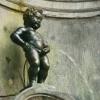
By manayunkman · Posted
Thank God I have an interest in something that keeps me very busy, I love every second of it. -

By SGT Wade · Posted
Not sure what it is, but the Latin on the patch roughly translates to “You give us your TACAN (Tactical Air Navigation) and we’ll drop your peace pigeons for you.” -

By pfrost · Posted
I think the Schiffer book is very nice, but I have found some errors here and there, including what I call "dealer lore" as opposed to actual scholarly research (such as copies of the pertinent regulations). Since the USN provided everything that an aviation cadet was going to wear, AND the Navy regulations very clearly proscribed what could be worn, I doubt that the cadet could wear V5 wings while in primary flight training (to steal a line from Animal House.... "Is that a PLEDGE PIN on your UNIFORM!') if it wasnt specifically allowed. Again, graduation from V5 program did NOT make you a Naval aviator, If the cadets WERE allowed to wear such a pin, there would be a statement in the cadet regulations that said: "If you graduated from the V5 program, you can wear V5 wings 1 inch above the center seam of the right breast pocket of your uniform...". That would be the type of scholarly proof I would want to see... Or maybe even a picture of new aviation cadets walking about with V5 wings on their uniform. The V5 program was basically the Navy contingent of the CPT-WTS civilian training program. The USAAF aviation cadets weren't wearing their CPT wings whilst being trained and I suspect the V5 guys were in the same boat with the USN. Still, never say never.... There is almost always an exception. -
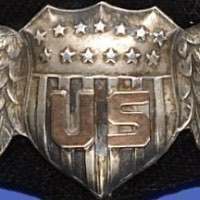
By cwnorma · Posted
Duncan Campbell once opined about WW1 era wings, "One to two new patterns heretofore unseen by collectors seem to crop up every year." While this has remained consistently true to the present, mostly attributable to the one-of-a-kind bespoke wings made by individual jewelers, it does seem especially strange that a wing made by a major manufacturer could evade collector knowledge. That seems to be the case with one such badge almost surely made by Bailey Banks and Biddle (BB&B) of Philadelphia, PA. Because this is a thread about "Dallas" wings, for ease of characterization and to avoid confusion with other types of multi-piece wings, we'll focus on Dr. Frost's @pfrost excellent collector's definition for Dallas wings: This simple but apt definition neatly expands the "Dallas" category to encompass all versions and all ratings of these popular badges, avoids the pitfall of tying the type to one specific manufacturer, and helps collectors understand how this popular design fits in with other WW1 era wing badges. Within the last decade, a few collectors became aware of another pattern of "Dallas" wings. In design and construction detail, these badges were categorically similar to other Dallas wings, but especially so to those known to have been made by BB&B. Side-by-side examination with a strong magnifying glass reveals the leather and cloth components to be identical. Certain mechanical construction techniques (i.e. a smooth, thin, flat, gold US affixed to a supporting "table" incorporated into the shield's die work, shape of the leather piece) are also fully consistent. Finally, the hinge and catch are identical--varying only by length of pin. While it is true multiple jewelers purchased findings from commercial manufacturers, and there is overlap, the physical consistency across the badges is noteworthy. The badges also share a common design "language." Until actually having a chance to examine a few examples of these badges "in the flesh," I too thought they were best described as yet another example of the popular Dallas wing. However, a side by side comparison with other BB&B wings revealed a key difference: These new badges are overall about 15% smaller: Despite being comparatively smaller than the larger badge, the 2nd type nonetheless remains over-sized; measuring in at just under three and a half inches. By the closing months of WW1, the Army had increasingly grown frustrated with the general state of non-uniformity across its various insignia. With respect to wing badges the ultimate (and for some, unhappy) result was establishment of the Adams design badges in 1919. Before these Adams badges supplanted all the others, various manufacturers seem to have responded to this pressure from "the brass" by marketing versions of their popular Dallas badges that hewed somewhat closer to the prescribed three-inch size specified by regulations. Another possibility worth considering is these smaller badges might represent a BB&B submission to the Government for evaluation when the Army was looking to crack-down on the wild WW1 era badges. This latter theory is not unreasonable; BB&B was responsible for many official designs of government medals and insignia. To date, no BB&B manufacturing records or advertising materials seem to have surfaced that reference these smaller badges. Coming late in the war, retailers may not have known they were an option for order--partially explaining their scarcity. Perhaps as well, they came late enough in the era that they were replaced almost immediately by the "FROM OFFICIAL DIE" Adams patterns--before many could find their way into the hands of many Aviators. We do know at least Brigadier General Billy Mitchell owned a pair. At any rate, these smaller badges are quite scarce and seldom encountered. If you are fortunate enough to spot one out in the wild, the aspect that stands out above all others is how much smaller they appear compared to other BB&B Dallas wings. The photo above captures this size difference well and should help if encountering one of these scarce wings.
-
-
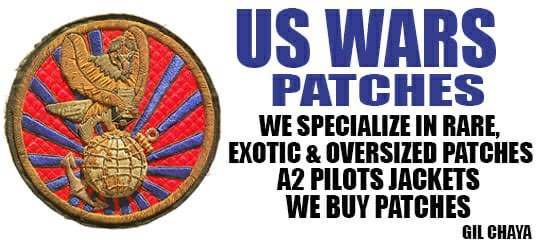
-

-
* While this forum is partially supported by our advertisers, we make no claim nor endorsement of authenticity of the products which these advertisers sell. If you have an issue with any advertiser, please take it up with them and not with the owner or staff of this forum.




